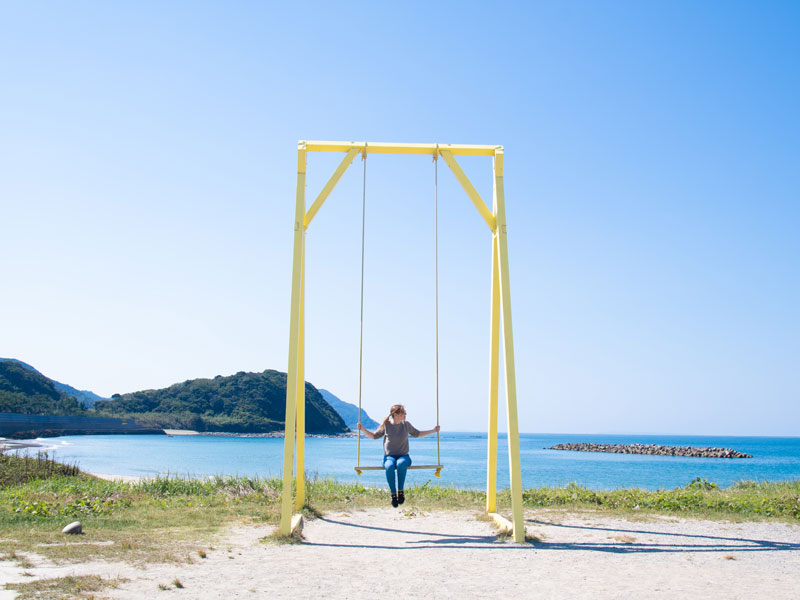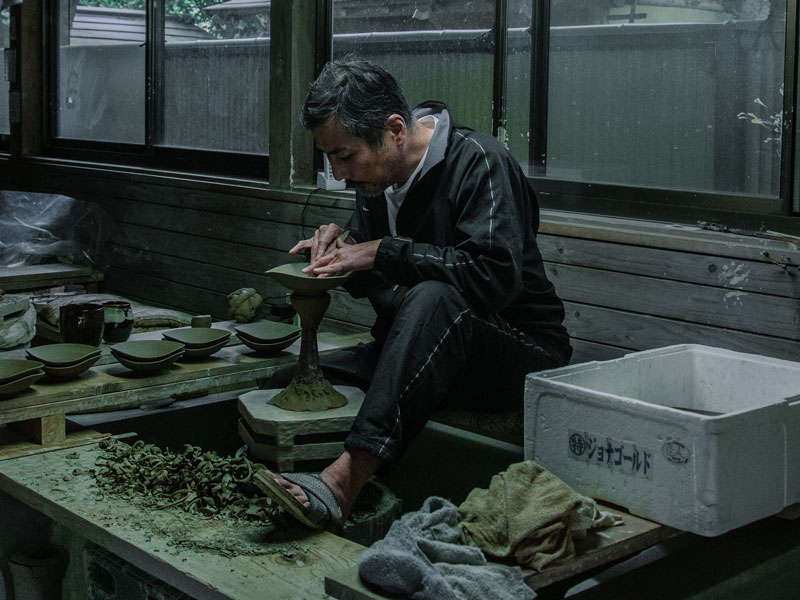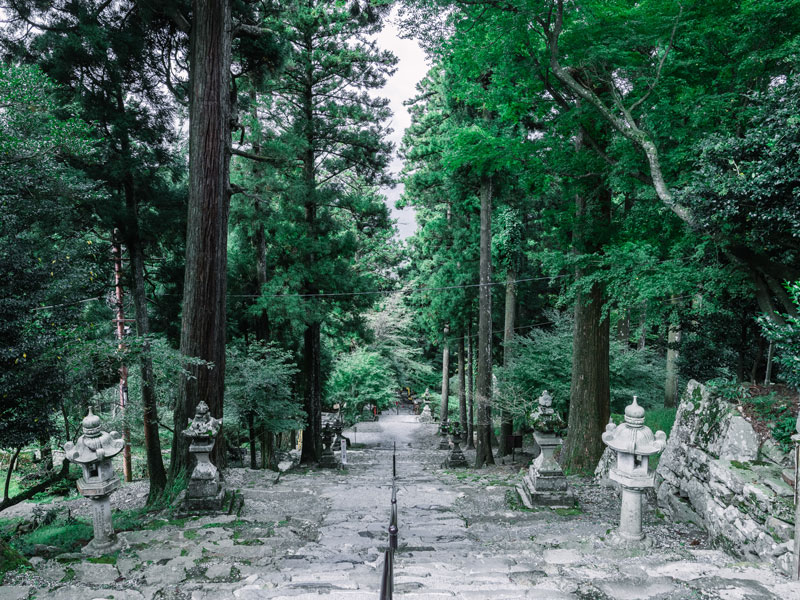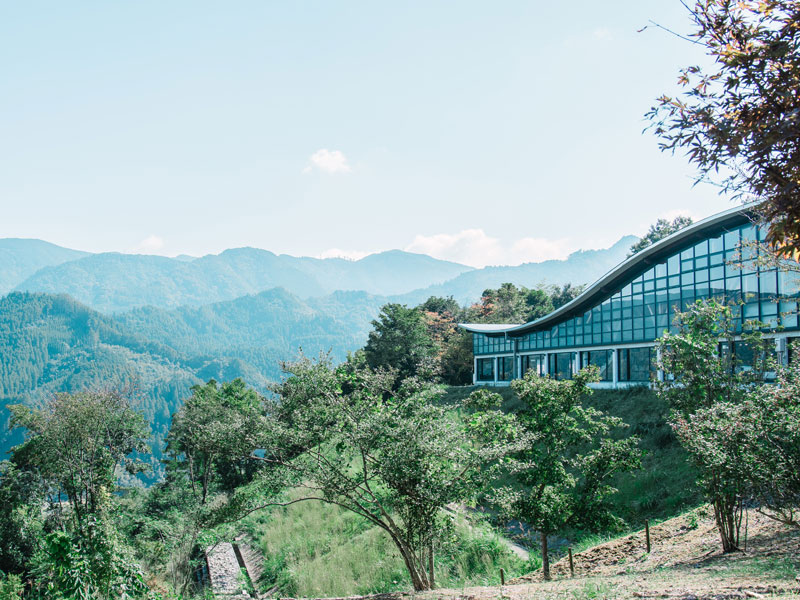Mention Fukuoka and people will — quite rightly — gush over how convenient the city is to get around and how the food is fantastic. But Fukuoka is more than a capital city. Less than an hour in almost any direction will take you to either the beach, the depths of the forest or to one of Japan’s most famous shrines. Here are some of our suggestions for Fukuoka destinations further afield.

Itoshima — Bucket List-worthy Beaches
Beach paradise Itoshima Peninsula has a plethora of stunning options perfect for a seaside getaway. One of the area’s most famous spots is Futamigaura Beach, with its bright white Sakurai Futamigaura torii gate. The gate marks the spot of the Meoto Iwa wedded rocks that jut out of the water just off the shore. A trip here is said to give you good luck in love — as well as some amazing coastal snapshots.
Southeast from Futamigaura lies Anego no Hama Beach, a so-called singing beach. The sand squeaks when you walk on it — a testament to how clean it is. It’s one of only 20 beaches in Japan like this making it a rarity worth checking out.
For those who aren’t into sweltering hot sandy spots, Itoshima has many other charms to explore. There is a multitude of cute cafés and bakeries — many of them serving breakfast — to enjoy while traveling through. Further inland, Shiraito Falls is a beautiful 24-meter-high waterfall that is an excellent destination in fall. The hike there is filled with maple trees, including the Banryu maple tree, which is said to be over 300 years old and is a prefectural natural treasure.
Winter travelers fear not — about 30 oyster huts across Itoshima open up for business from late autumn to early spring at a few of the peninsula’s ports. They serve grilled oysters, turban shells and other fresh seafood caught off the coast here.
 Hoshino Village — Tranquil Tea Tasting
Hoshino Village — Tranquil Tea Tasting
A picturesque mountain hideaway, Hoshino village offers panoramic views of terraced rice fields during the day and star-filled skies at night. Visitors staying the night should check out Hoshi no Onsenkan Kirara, a hot spring resort with open-air baths and hearty country fare. There is also a large camping ground nearby for those who prefer a more rustic stay.
Hoshino village is part of Yame city, where locals have been cultivating tea for over 600 years. Shizuku tea, a form of highly concentrated gyokuro green tea with an intensely rich flavor, has its origins here. Tea lovers should drop by the Tea Museum in Yame, a modern facility focused on the region’s green gold. Visitors can try their hand at grinding tea into fine matcha powder by hand, roasting tea leaves using a traditional pot or making Japanese confectionery. There is also a café serving green tea soba noodles, ice cream and more. Take a stroll around the museum’s surroundings to find a small bamboo forest and take in the sweeping views of Hoshino village’s mountains.

Toho Village — Pottery Paradise
Almost 400 years of craftsmanship are concentrated in the small village of Toho, which has a population of only 2,000 people. There are about 40 working kilns firing up two world-renowned pottery styles: Takatori-yaki and Koishiwara-yaki.
Koishiwara-ware is glazed before being placed in the kiln. Most notable for its production of daily-use tableware, Koishiwara designs are simple and follow a concept of functional beauty. Takatori-ware is known for its tea bowls and has seven distinct glazes that give the ceramics a warm, earthy feel.
Visitors are welcome to drop by the potteries during their opening hours, though some may require reservations in advance to ensure the craftsmen are on site.
Make the most of your visit by heading to one of the bi-annual Koishiwara Pottery Festival events, where local potters sell their wares and offer demonstrations and workshops. The festival takes place from May 3-5 and in early October.

Mount Hiko and Hikosan Jingu — Sacred Sanctuary
On the far end of the prefecture, Mount Hiko just touches the border between Fukuoka and Oita prefectures. Considered sacred by Shugendo (a form of mountain asceticism) practitioners for more than a thousand years, pilgrims would risk their lives to scale the mountain and worship here. It is one of the three major mountain pilgrimage destinations in Japan along with Mount Haguro in Yamagata and Mount Omine in Nara. Visitors can still attempt the hike past the main shrine grounds to one of the mountain’s three major peaks, but should come prepared for changeable weather. The highest peak is Minami-dake, which stands at a soaring 1,200 meters above the sea and boasts vibrant red, yellow and orange hues in autumn.
Hikosan Jingu, which sits near the base of the mountain, is unique in that it is the only shrine in Japan dedicated to sun goddess Amaterasu’s oldest son. The main building Hohei-den was formerly a lecture hall and features a fascinating mix of Japanese architectural techniques and Chinese-inspired design elements. A visit here may be shrouded in silence these days, but at its peak during the Edo period, Hikosan Jingu had 420,000 parishioners and its annual Matsu-e festival drew almost 80,000 people from all over Kyushu to celebrate. Be sure to stop by the Hiko Flower Garden halfway up to the shrine (climb the stairs or take the slope car up the hill to Hana Station) to enjoy the colorful flowers and trees in spring, summer or autumn.
For more fascinating Fukuoka destinations and how to get here, head to the ANA JTP website.
Photos by Reylia Slaby.
Sponsored Post
Updated On December 26, 2022


 Hoshino Village — Tranquil Tea Tasting
Hoshino Village — Tranquil Tea Tasting






